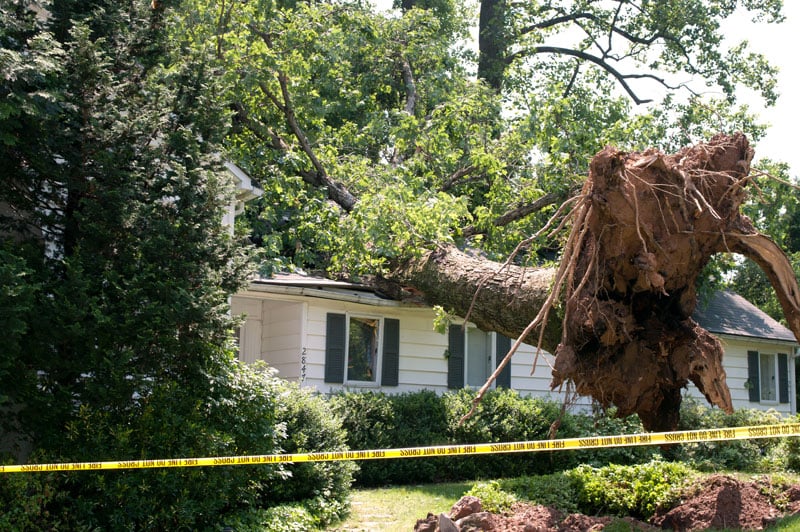
Storms can wreak havoc on Ventura County, leaving both homes and businesses in chaos. The aftermath often includes broken windows, flooded basements, and scattered debris. With all that mess, it’s easy to feel overwhelmed. Fast action is key, as timely cleanup not only restores a sense of normalcy but also prevents further damage. Clearing away debris and repair work must happen promptly to keep issues from piling up.
When tackling storm damage, it’s important to know what you’re dealing with. Various aspects—like water damage, structural issues, and lingering safety hazards—need immediate attention. That’s where professional help comes into play, guiding you through the cleanup safely and efficiently.
Assessing Storm Damage
Before starting cleanup efforts, the first step is understanding the extent of the damage. A comprehensive assessment helps in crafting a plan to tackle everything efficiently. Identifying what’s visibly harmed is only the start; hidden damage can be lurking in places you might not expect, like insulation or behind walls.
Here’s a quick guide to assess storm damage:
1. Survey the Exterior: Walk around your property and note any visible damage to roofs, windows, and siding. Look for signs of water intrusion or structural issues.
2. Check for Water Damage: Water stains on walls or ceilings are a giveaway. Also, look for warped floors or soggy carpets that indicate underlying problems.
3. Inspect the Attic: Don’t forget areas like the attic. Roof leaks often manifest here, causing unseen damage if not checked early.
4. Evaluate Electrical Systems: Storms can disrupt electrical systems. Watch for flickering lights or discolored outlets, signs it’s time for an electrician.
5. List Visible Hazards: Make note of any hazards like broken tree limbs or exposed wires that could pose immediate risks.
Creating a detailed report of these observations helps professionals prioritize tasks and address issues before they escalate. Knowing what you’re up against means you can work on cleanup efficiently and get back to normal life faster.
Safety Precautions
While addressing storm damage, safety must come first. Entering a damaged property without precautions can be risky, especially if structural integrity is compromised or electrical systems have been affected.
Here are key safety measures to keep in mind:
– Turn Off Utilities: If water or structural damage is present, cut off electricity, gas, and water to avoid accidents or further damage.
– Wear Protective Gear: Equip yourself with gloves, boots, and masks to protect against debris, harmful materials, and mold.
– Structural Safety: Ensure that structures are stable and secure. Avoid working in areas that might collapse or shift unexpectedly.
– Stay Dry: Prevent slips and falls by being cautious in wet areas, and always use dry paths to navigate the property.
– Avoid DIY Electrical Fixes: Handling damaged electrical systems can be dangerous. Let a qualified technician inspect and repair them.
With these measures in place, you can ensure safety while handling storm damage cleanup. Taking these precautions not only keeps you safe but also allows the cleanup process to be more effective.
Debris and Water Removal
Cleaning up after a storm involves more than just picking up the pieces you can see; it’s also about ensuring everything else is safe and sound. Once the big stuff is out of the way, water removal is next on the list. Excess water can lead to problems like mold and structural weaknesses if not dealt with quickly. Here’s a step-by-step guide to help:
– Clear the Area: Start by removing all large debris, such as tree branches and scattered building materials. This makes it easier and safer to access areas needing more intense cleanup.
– Pump Out Standing Water: Utilize pumps to remove any standing water, especially in basements or low-lying areas. This helps prevent long-term water damage and mold growth.
– Use Wet/Dry Vacuums: These handy machines can suck up water from carpets and other surfaces; they’re effective in giving those damp areas a quick dry.
– Dehumidifiers and Fans: Include these devices to dry the indoor air and surfaces, keeping excess moisture at bay. Proper airflow is crucial to preventing mold.
When facing a huge mess, it’s tempting to do it all yourself. However, professional help not only makes the job quicker but also ensures no hidden water is left to cause troubles later. They have specialized tools and expertise to spot and deal with unseen damage.
Repair and Restoration
After cleaning the mess left behind by a storm, the next focus is fixing what’s broken. Repairing your home or business goes beyond aesthetics; it’s about ensuring everything is safe and functional again. Start with these steps:
– Address Structural Repairs: Check for structural damage such as cracks in walls or weakened foundations. It’s important to stabilize these elements to prevent further issues.
– Window and Roof Fixes: Repair or replace any broken windows and damaged roofing to make sure your property is weatherproof for the next storm. Tarping can provide a temporary solution while waiting for deeper repairs.
– Drywall and Insulation Replacement: Remove any soggy drywall or insulation and replace it to avoid mold growth and maintain a comfortable indoor climate.
Incorporating modern techniques in repairs can often lead to better results. This might include using materials that are more resilient to wind and water. Skilled restoration experts can offer insights into improvements that enhance the durability of your building against future storms.
Preventative Measures for Future Storms
It’s always good to learn from past experiences and beef up your defenses against future storms. Here’s what you can do:
– Strengthen Windows and Doors: Install impact-resistant windows and reinforce door frames. These can provide a solid first line of defense against high winds and flying debris.
– Install Flood Barriers: Use barriers or sandbags in areas susceptible to flooding. These can deter water from entering your building when heavy rains hit.
– Improve Drainage Systems: Ensure gutters and downspouts are clear of blockages and in good working order to channel water away from your property efficiently.
– Regular Property Inspection: Schedule routine checks for your roof and foundation to identify any potential weaknesses early on. This proactive approach can minimize shock damages when storms strike.
Staying a step ahead of potential disasters involves keen observation, timely maintenance, and smart planning. These measures help shield your home or business from the worst of the weather.
Wrapping Up Your Storm Damage Cleanup
In the aftermath of a storm, it’s easy to feel discouraged by the amount of work to restore your property. Yet, by following a structured plan and addressing each aspect of cleanup diligently, you can bring your space back to life. Prioritizing assessments, ensuring safe cleanup practices, and engaging in effective debris removal are foundational steps.
Embrace the journey of repair with both care and caution, knowing that each repair builds the resilience of your property against future storms. Seeking help from seasoned experts not only assures thorough cleanup but also adds a layer of security in your restoration endeavors. Transform the experience into an opportunity to reinforce and protect your investment for years to come.
When storms leave chaos behind, quick action is key to restoring your property to its former state. Don’t face the aftermath alone. Trust Restoration Masters for professional help. With our extensive experience, we ensure safe and efficient cleanup while spotting hidden damage that others might miss. Discover how expert guidance from restoration companies in Los Angeles can make all the difference. Let us help secure and restore your home or business promptly.





